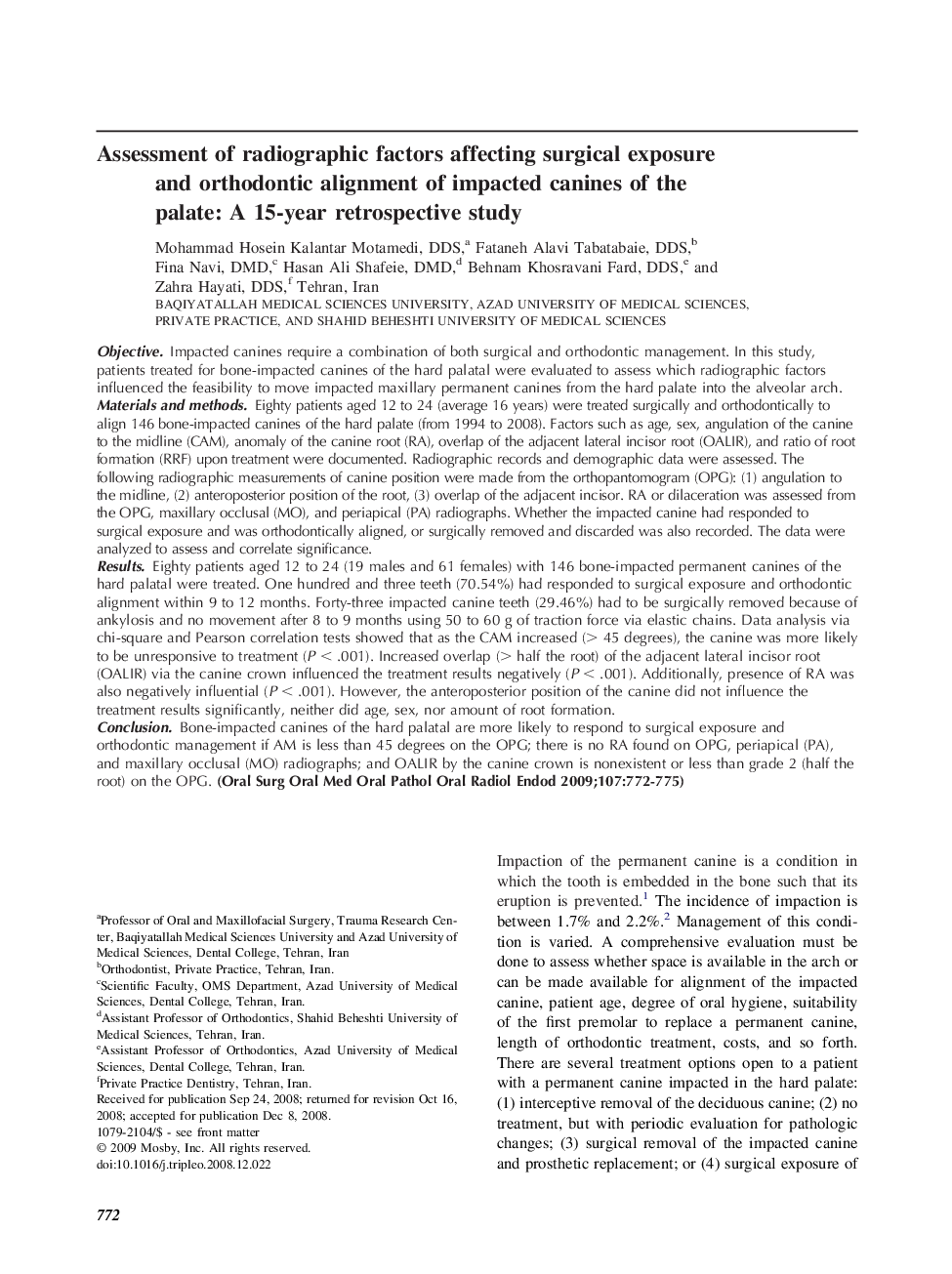| Article ID | Journal | Published Year | Pages | File Type |
|---|---|---|---|---|
| 3168020 | Oral Surgery, Oral Medicine, Oral Pathology, Oral Radiology, and Endodontology | 2009 | 4 Pages |
ObjectiveImpacted canines require a combination of both surgical and orthodontic management. In this study, patients treated for bone-impacted canines of the hard palatal were evaluated to assess which radiographic factors influenced the feasibility to move impacted maxillary permanent canines from the hard palate into the alveolar arch.Materials and methodsEighty patients aged 12 to 24 (average 16 years) were treated surgically and orthodontically to align 146 bone-impacted canines of the hard palate (from 1994 to 2008). Factors such as age, sex, angulation of the canine to the midline (CAM), anomaly of the canine root (RA), overlap of the adjacent lateral incisor root (OALIR), and ratio of root formation (RRF) upon treatment were documented. Radiographic records and demographic data were assessed. The following radiographic measurements of canine position were made from the orthopantomogram (OPG): (1) angulation to the midline, (2) anteroposterior position of the root, (3) overlap of the adjacent incisor. RA or dilaceration was assessed from the OPG, maxillary occlusal (MO), and periapical (PA) radiographs. Whether the impacted canine had responded to surgical exposure and was orthodontically aligned, or surgically removed and discarded was also recorded. The data were analyzed to assess and correlate significance.ResultsEighty patients aged 12 to 24 (19 males and 61 females) with 146 bone-impacted permanent canines of the hard palatal were treated. One hundred and three teeth (70.54%) had responded to surgical exposure and orthodontic alignment within 9 to 12 months. Forty-three impacted canine teeth (29.46%) had to be surgically removed because of ankylosis and no movement after 8 to 9 months using 50 to 60 g of traction force via elastic chains. Data analysis via chi-square and Pearson correlation tests showed that as the CAM increased (> 45 degrees), the canine was more likely to be unresponsive to treatment (P < .001). Increased overlap (> half the root) of the adjacent lateral incisor root (OALIR) via the canine crown influenced the treatment results negatively (P < .001). Additionally, presence of RA was also negatively influential (P < .001). However, the anteroposterior position of the canine did not influence the treatment results significantly, neither did age, sex, nor amount of root formation.ConclusionBone-impacted canines of the hard palatal are more likely to respond to surgical exposure and orthodontic management if AM is less than 45 degrees on the OPG; there is no RA found on OPG, periapical (PA), and maxillary occlusal (MO) radiographs; and OALIR by the canine crown is nonexistent or less than grade 2 (half the root) on the OPG.
